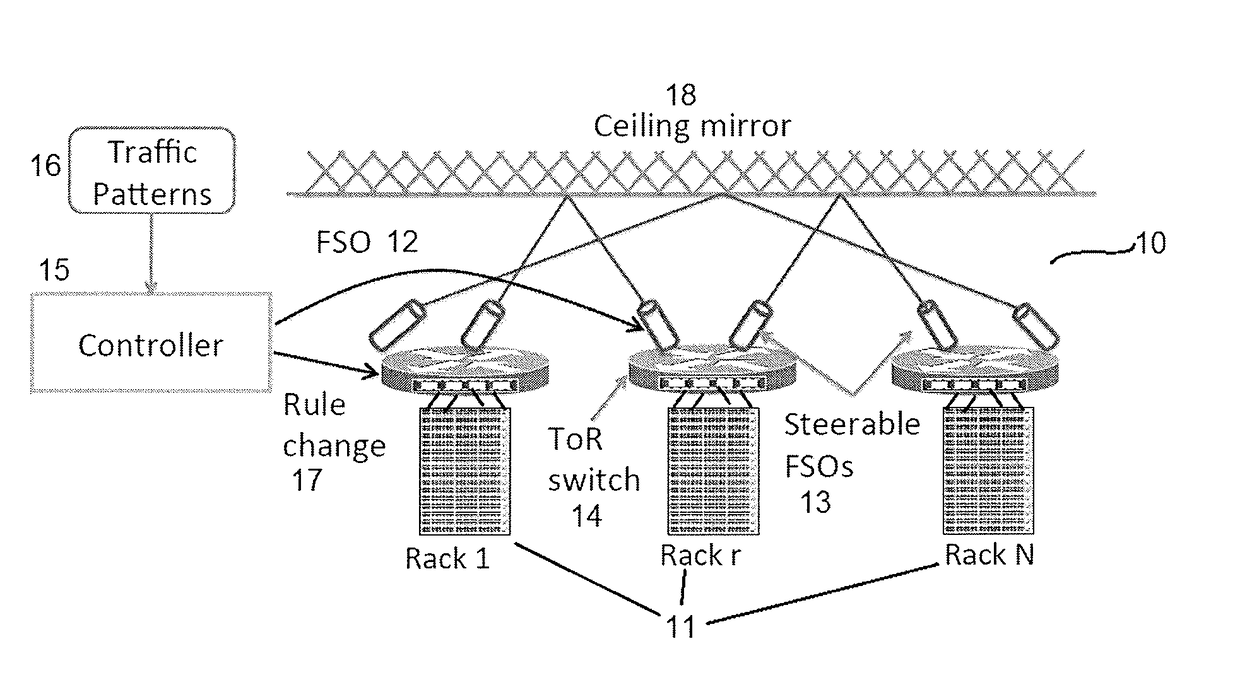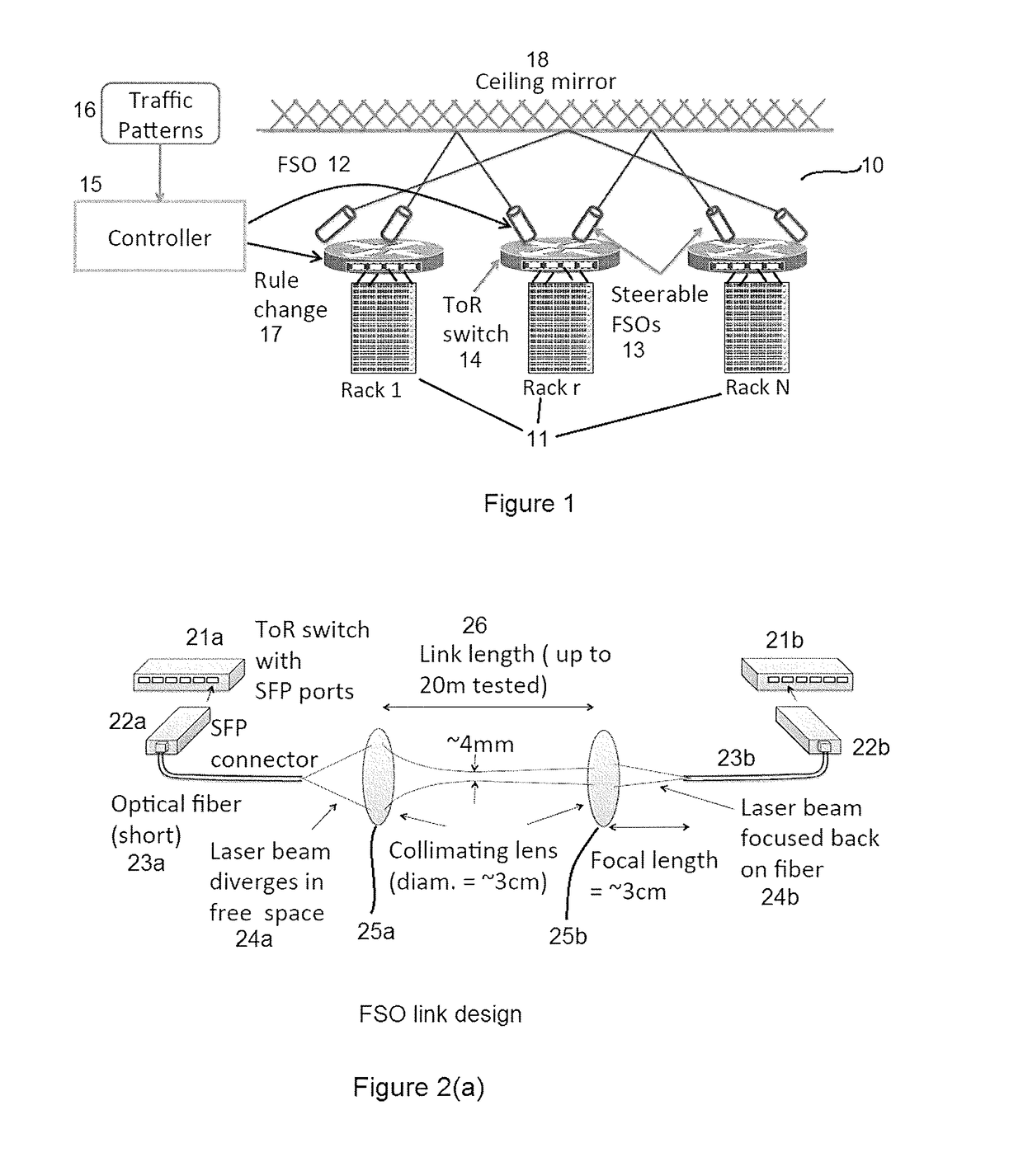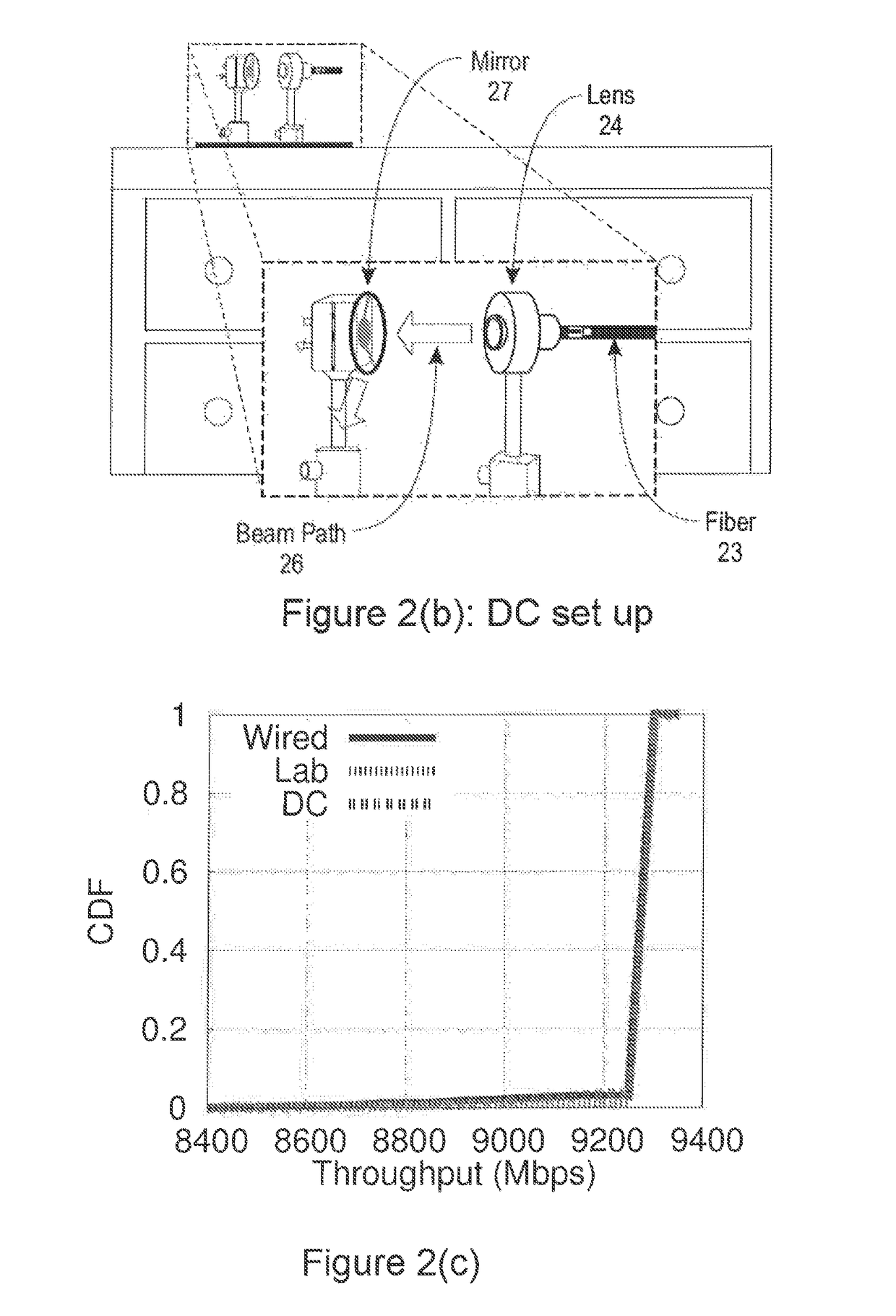Reconfigurable wireless data center network using free-space optics
a wireless data center and free-space technology, applied in the field of data center network design and management, can solve the problems of low cost, high cost, and current dc network architecture that does not provide a satisfactory solution, and achieves high data ra
- Summary
- Abstract
- Description
- Claims
- Application Information
AI Technical Summary
Benefits of technology
Problems solved by technology
Method used
Image
Examples
Embodiment Construction
[0067]Exemplary embodiments of the disclosure as described herein generally provide systems and methods for flexible free-space optical inter-rack networks. While embodiments are susceptible to various modifications and alternative forms, specific embodiments thereof are shown by way of example in the drawings and will herein be described in detail. It should be understood, however, that there is no intent to limit the disclosure to the particular forms disclosed, but on the contrary, the disclosure is to cover all modifications, equivalents, and alternatives falling within the spirit and scope of the disclosure.
[0068]Embodiments of the present disclosure provide a DC architecture network design in which: (1) all inter-rack links are flexible; (2) all inter-rack links are wireless; and (3) the core switching backbone is eliminated.
[0069]Embodiments can provide unprecedented qualitative and quantitative benefits for DC networks. First, infrastructure cost can be reduced without compr...
PUM
 Login to View More
Login to View More Abstract
Description
Claims
Application Information
 Login to View More
Login to View More - R&D
- Intellectual Property
- Life Sciences
- Materials
- Tech Scout
- Unparalleled Data Quality
- Higher Quality Content
- 60% Fewer Hallucinations
Browse by: Latest US Patents, China's latest patents, Technical Efficacy Thesaurus, Application Domain, Technology Topic, Popular Technical Reports.
© 2025 PatSnap. All rights reserved.Legal|Privacy policy|Modern Slavery Act Transparency Statement|Sitemap|About US| Contact US: help@patsnap.com



